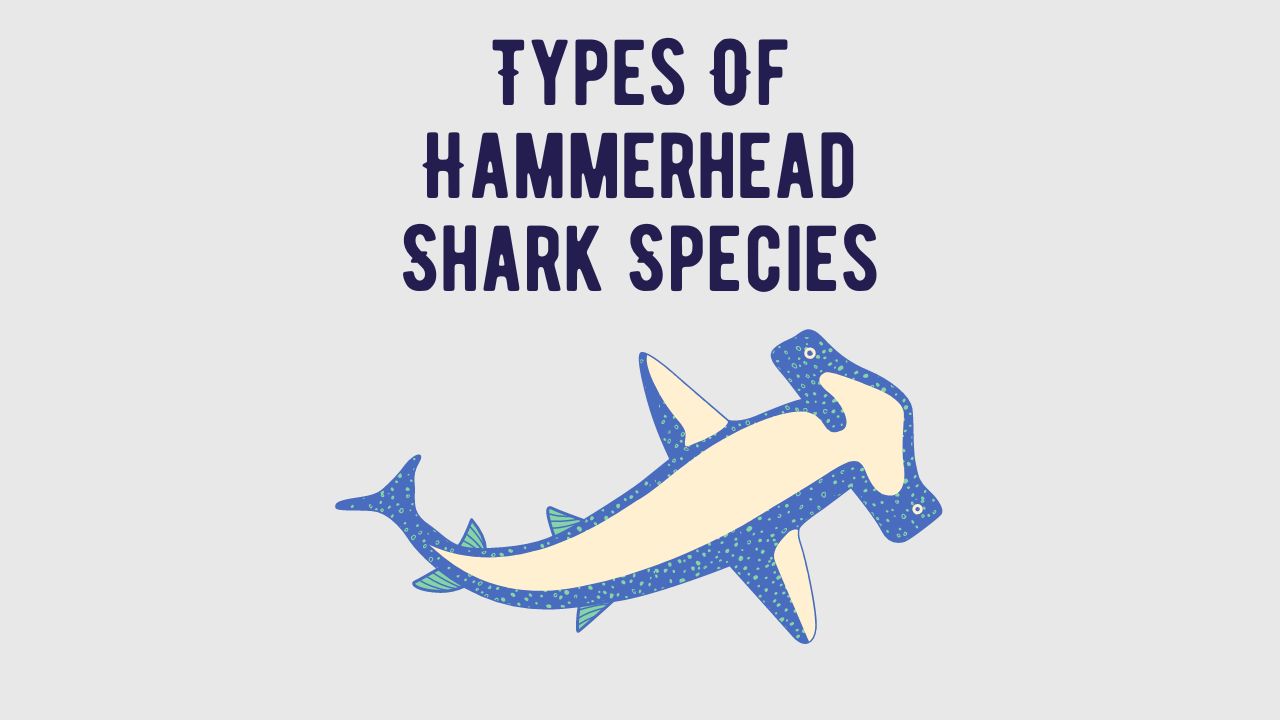
Hammerhead sharks (family Sphyrnidae) are a unique and captivating group of predators, known for their distinctive hammer-shaped heads, scientifically termed cephalofoils. Within this family, there are various species, each with its own set of characteristics and features.
The hammerhead shark, with its distinctive T-shaped head, is one of the most iconic and recognizable species in the marine world. However, what many people may not realize is that there isn’t just one type of hammerhead shark; there are several species, each with its own unique characteristics and traits. In this in-depth guide, we will explore and delve into the fascinating details of each hammerhead shark species, shedding light on their habitats, behaviors, and conservation status.
1. Winghead Shark (Eusphyra blochii)
Appearance: The Winghead Shark, scientifically known as Eusphyra blochii, is easily identified by its exceptionally wide head, resembling wings. This species has a slender body, often reaching lengths of up to 4 feet.
Habitat: Winghead Sharks are typically found in tropical and subtropical coastal waters. They prefer shallow environments, including bays and estuaries.
Behavior: These sharks are known for their distinctively shaped heads, which are believed to aid in maneuverability and hunting. They primarily feed on small fish and cephalopods.
Conservation Status: The conservation status of the Winghead Shark is currently of concern due to the impact of overfishing and habitat degradation. Conservation efforts are underway to protect their habitats and regulate fishing practices.
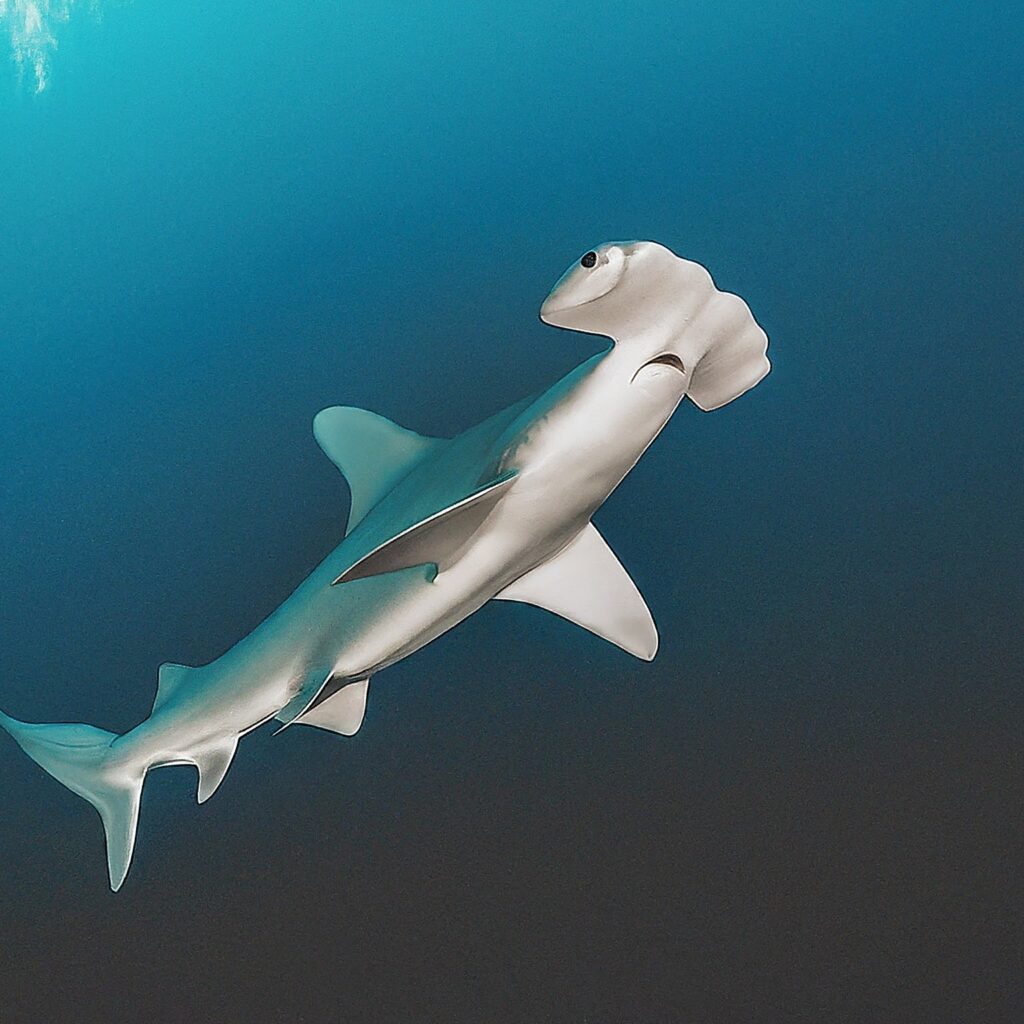
2. Scalloped Bonnethead (Sphyrna corona)
Appearance: The Scalloped Bonnethead, or Sphyrna corona, is a smaller member of the hammerhead family with a head that is rounded and scalloped, resembling a bonnet. Their bodies are typically light brown or gray.
Habitat: These sharks inhabit shallow coastal waters, including seagrass beds and sandy flats. They are often found in the western Atlantic Ocean.
Behavior: Scalloped Bonnetheads are known for their unique feeding behavior. They consume a variety of prey, including small fish and crustaceans. Their smaller size allows them to navigate through seagrass beds efficiently.
Conservation Status: As a relatively lesser-known species, the conservation status of the Scalloped Bonnethead is not fully assessed. However, like many sharks, they face threats from overfishing and habitat degradation.
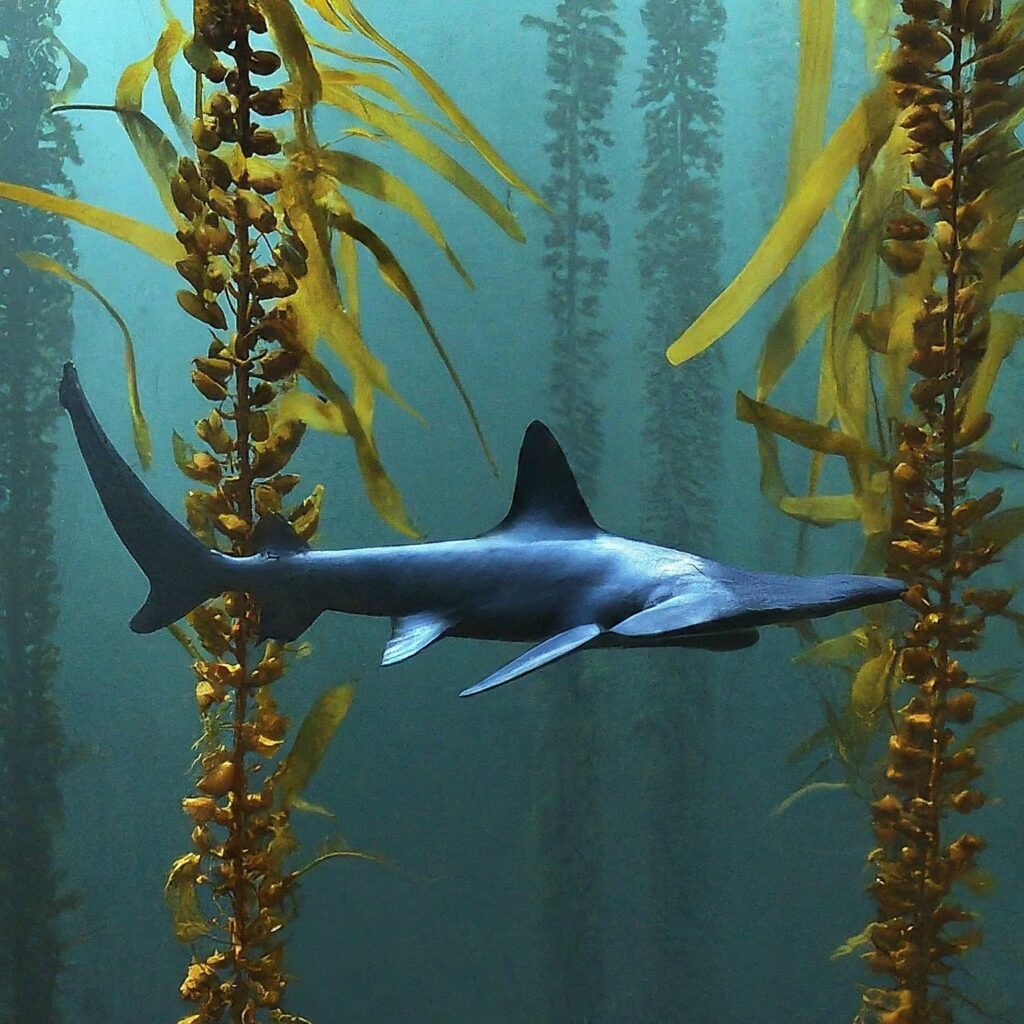
3. Carolina Hammerhead (Sphyrna gilberti)
Appearance: The Carolina Hammerhead, scientifically named Sphyrna gilberti, is a smaller hammerhead species with a relatively narrow hammer-shaped head. They have a streamlined body, and their coloration varies from gray to brown.
Habitat: These hammerheads are primarily found in the western Atlantic Ocean, particularly off the coasts of the southeastern United States.
Behavior: Carolina Hammerheads exhibit typical hammerhead behavior, using their specialized heads to detect and capture prey. They feed on a variety of small fish and invertebrates.
Conservation Status: The conservation status of the Carolina Hammerhead is not well-documented, and more research is needed to understand their population dynamics and threats.
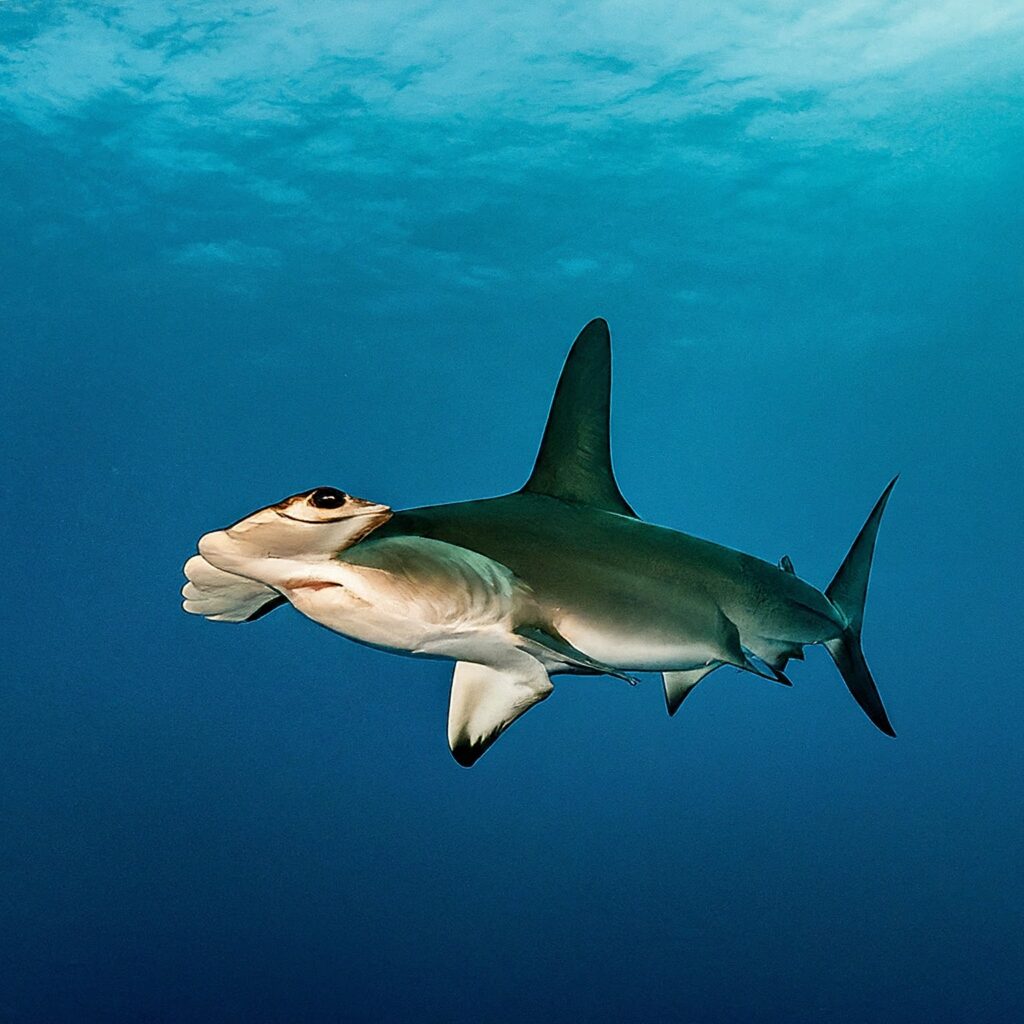
4. Scalloped Hammerhead (Sphyrna lewini)
Appearance: The Scalloped Hammerhead, or Sphyrna lewini, is one of the most easily recognizable hammerhead species. Its hammerhead is characterized by a distinctive scalloped shape, with a central notch.
Habitat: Scalloped Hammerheads are widely distributed and can be found in both coastal and offshore waters. They inhabit tropical and warm temperate seas around the world.
Behavior: These sharks are known for their schooling behavior, often forming large groups. They feed on a variety of prey, including small fish and cephalopods. Scalloped Hammerheads are listed as endangered due to overfishing and finning.
Conservation Status: The Scalloped Hammerhead is listed as endangered on the International Union for Conservation of Nature (IUCN) Red List. Conservation efforts are crucial to protect their populations from further decline.

5. Scoophead (Sphyrna media)
Appearance: The Scoophead, scientifically known as Sphyrna media, is a lesser-known species characterized by its unique shovel-shaped head. Their bodies are typically bronze or gray, and they have a moderate size compared to other hammerhead species.
Habitat: Scoopheads inhabit coastal waters and are commonly found in the Indo-West Pacific region.
Behavior: Not much is known about the behavior of Scoophead sharks, as they are not as extensively studied as some other hammerhead species. Their shovel-shaped heads are believed to assist in detecting and capturing prey.
Conservation Status: Due to their limited visibility in scientific studies, the conservation status of the Scoophead is not well-documented. Further research is needed to assess their population status and potential threats.
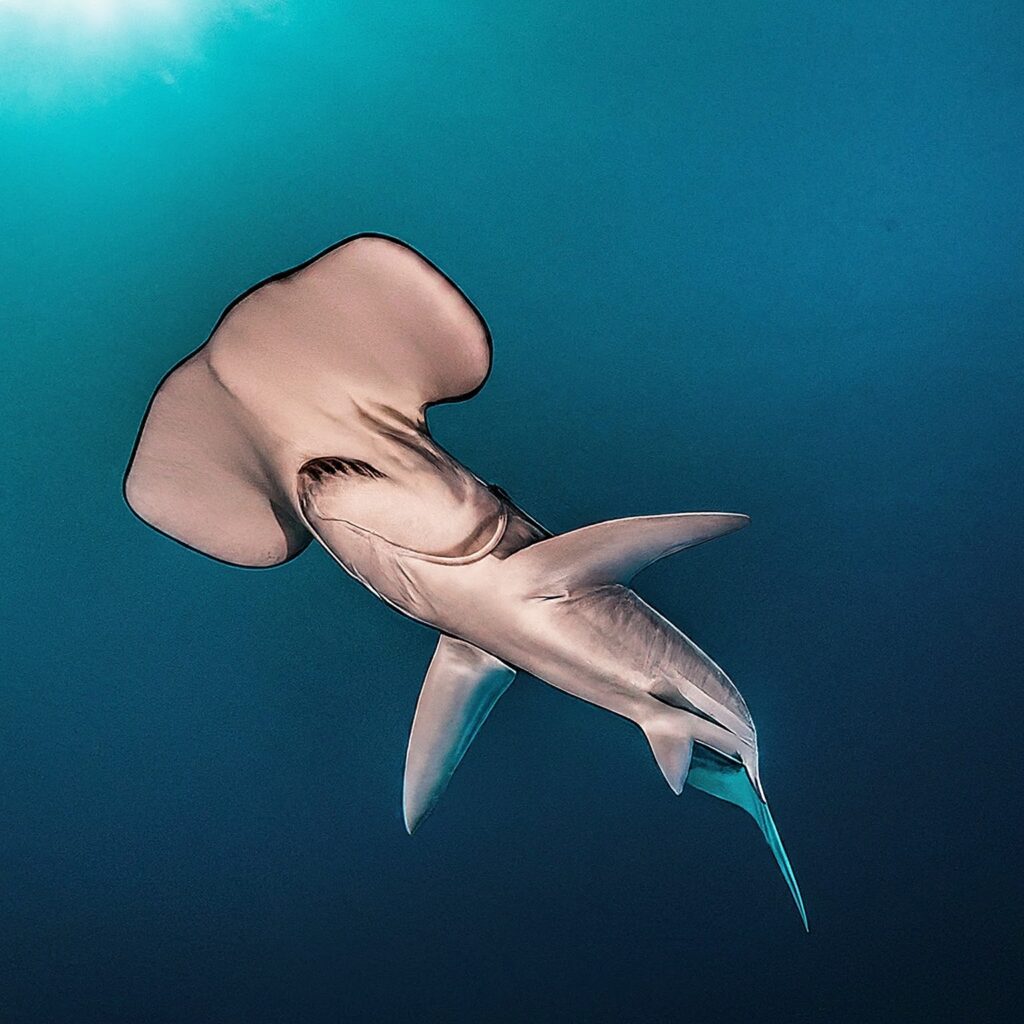
6. Great Hammerhead (Sphyrna mokarran)
Appearance: The Great Hammerhead, scientifically known as Sphyrna mokarran, is the largest of the hammerhead species. They have a wide and flattened head, resembling a double-headed hammer.
Habitat: These sharks are found in both coastal and offshore waters, favoring warm temperate and tropical seas. They are often encountered near continental shelves.
Behavior: Great Hammerheads are known for their solitary nature and distinct hunting behavior. They feed on a variety of prey, including rays, smaller sharks, and bony fish. Due to their size and solitary habits, they are less frequently encountered by humans.
Conservation Status: The Great Hammerhead is listed as endangered on the IUCN Red List. They face threats from overfishing, both targeted and as bycatch. Conservation measures are crucial to protect their populations.
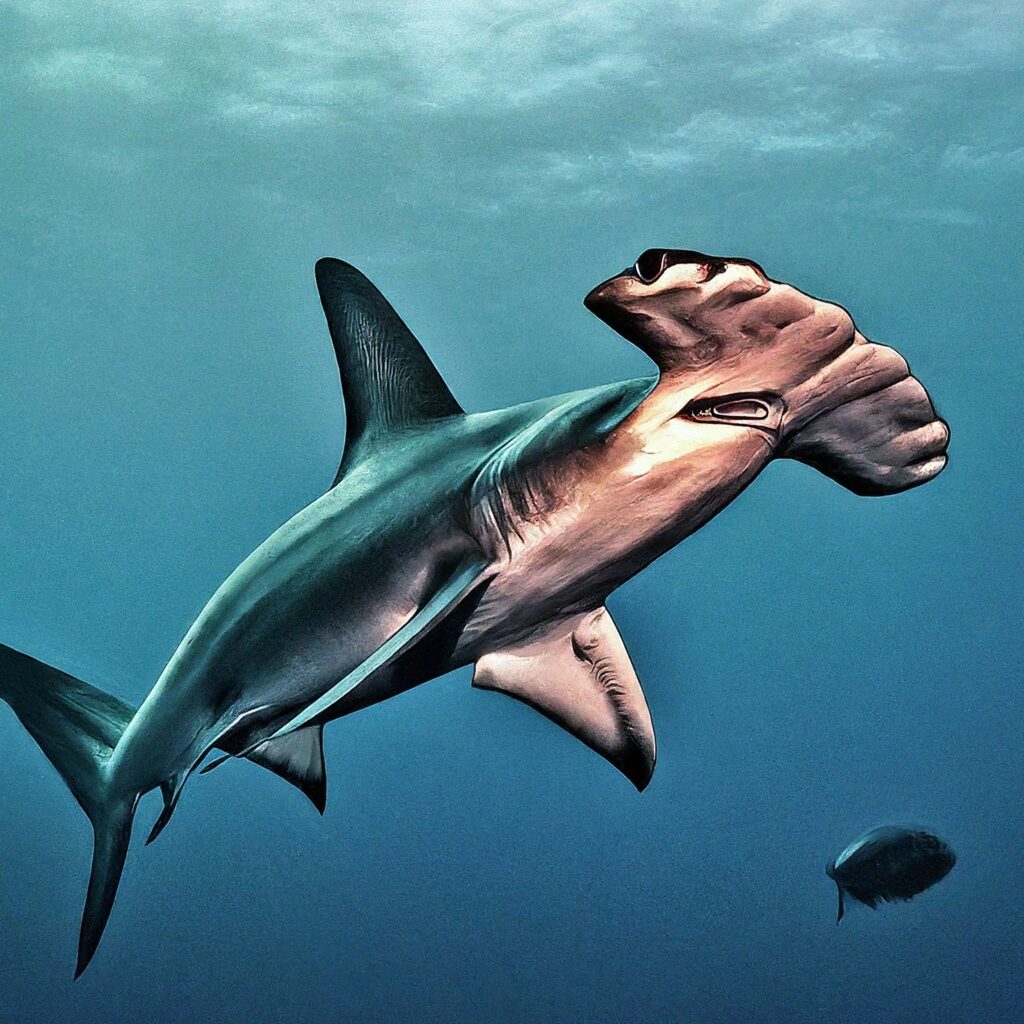
7. Bonnethead (Sphyrna tiburo)
Appearance: The Bonnethead, or Sphyrna tiburo, is a smaller hammerhead species with a head that is more rounded and shovel-shaped compared to other hammerheads. They have a light brown or gray coloration.
Habitat: Bonnetheads are found in shallow coastal waters, including estuaries and seagrass beds. They are commonly encountered in the western Atlantic Ocean.
Behavior: Bonnetheads are unique among hammerheads as they are known to feed on seagrass in addition to small fish and invertebrates. Their omnivorous diet sets them apart from other hammerhead species.
Conservation Status: The Bonnethead is not currently assessed on the IUCN Red List. While they may not face the same level of threats as larger hammerheads, monitoring their populations is essential for conservation efforts.
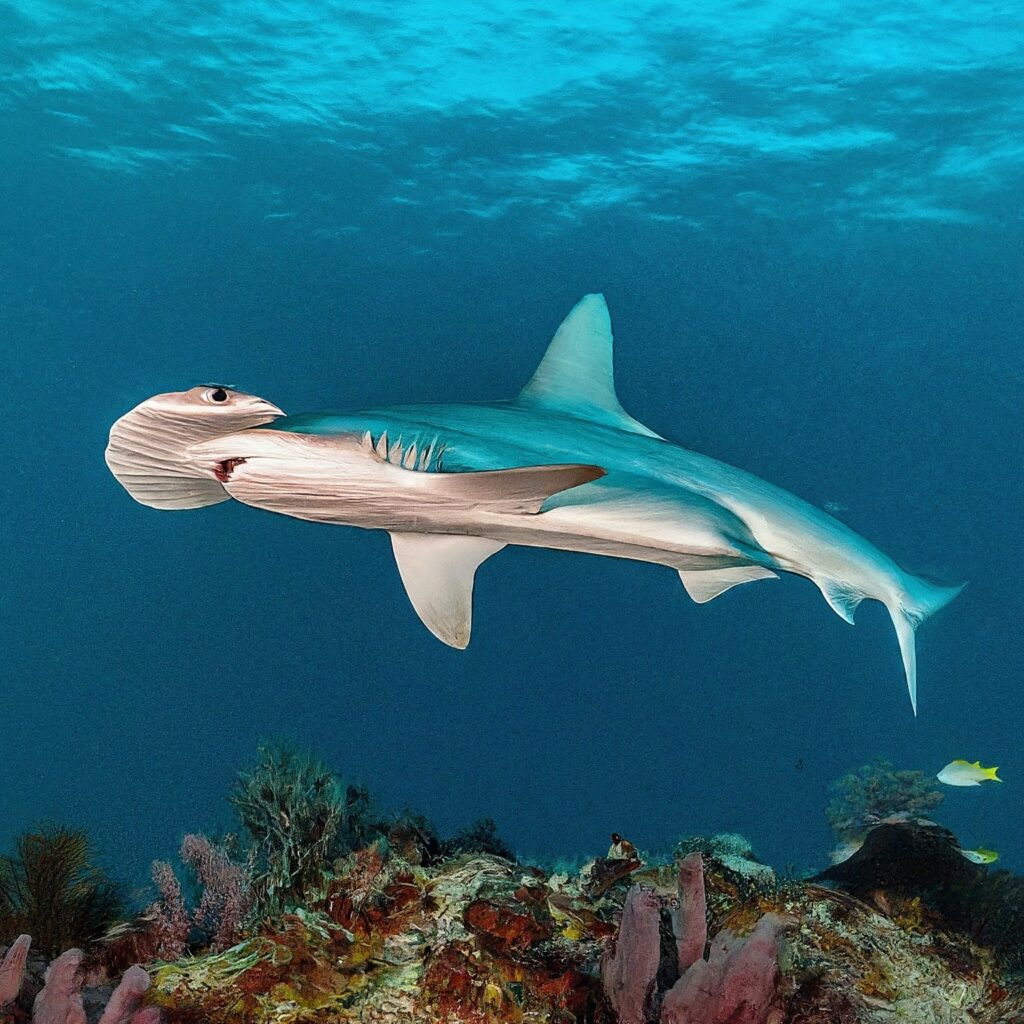
8. Smalleye Hammerhead (Sphyrna tudes)
Appearance: The Smalleye Hammerhead, scientifically named Sphyrna tudes, is a small hammerhead species with a distinctively small eye relative to its head size. They have a slender body and are typically brown or gray.
Habitat: Smalleye Hammerheads inhabit coastal waters in the Indo-West Pacific region. They are often found in areas with sandy or muddy substrates.
Behavior: Little is known about the specific behavior of Smalleye Hammerheads. Like other hammerheads, they likely feed on small fish and invertebrates using their specialized head.
Conservation Status: The conservation status of the Smalleye Hammerhead is not well-documented. Given their limited visibility in scientific studies, further research is needed to assess their population status and potential threats.
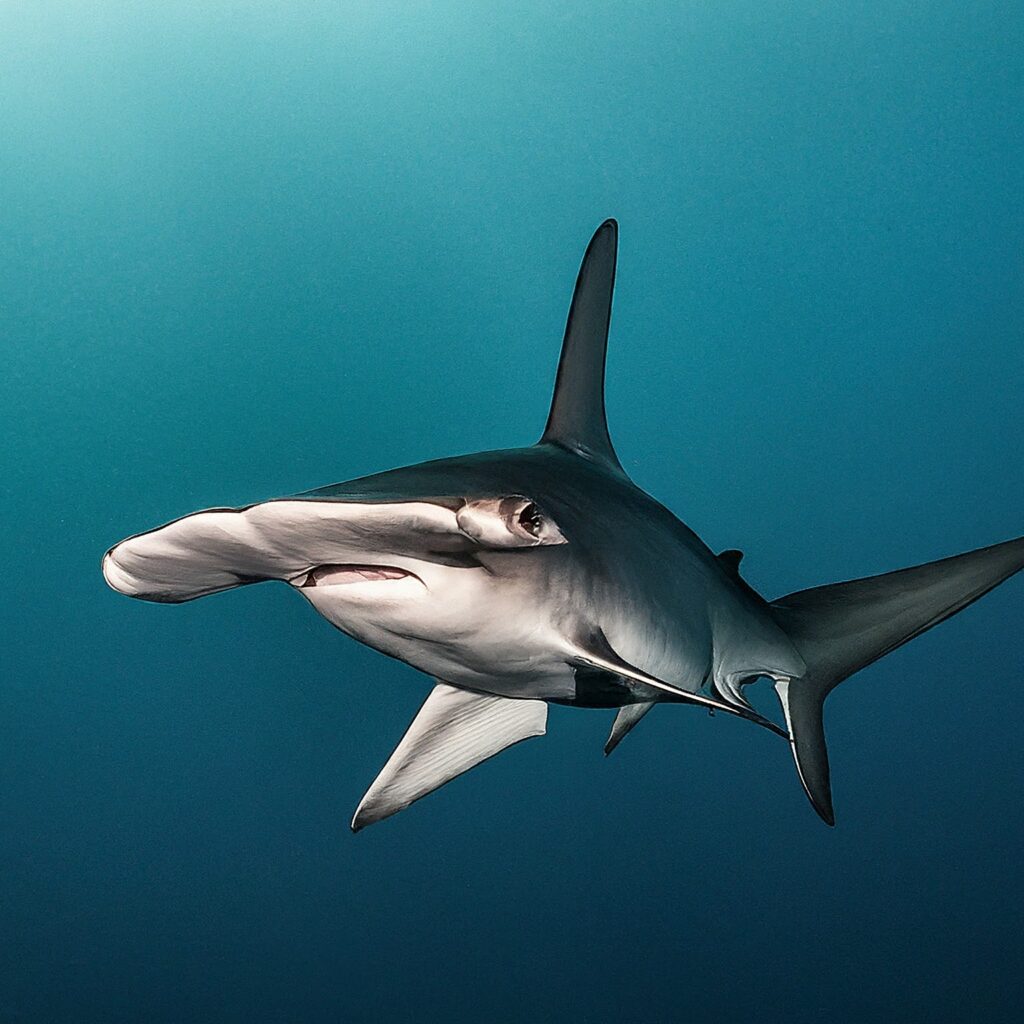
9. Smooth Hammerhead (Sphyrna zygaena)
Appearance: The Smooth Hammerhead, or Sphyrna zygaena, is characterized by its relatively smooth and rounded head compared to other hammerhead species. They have a streamlined body and are typically brown or gray.
Habitat: Smooth Hammerheads are found in both coastal and offshore waters, preferring temperate and tropical seas. They have a global distribution and can be encountered in various oceanic regions.
Behavior: Smooth Hammerheads exhibit typical hammerhead behavior, using their specialized heads to detect and capture prey. They feed on a variety of small fish and cephalopods.
Conservation Status: The conservation status of the Smooth Hammerhead is of concern, and they are listed as globally vulnerable on the IUCN Red List. Overfishing, particularly for their fins, poses a significant threat to their populations.
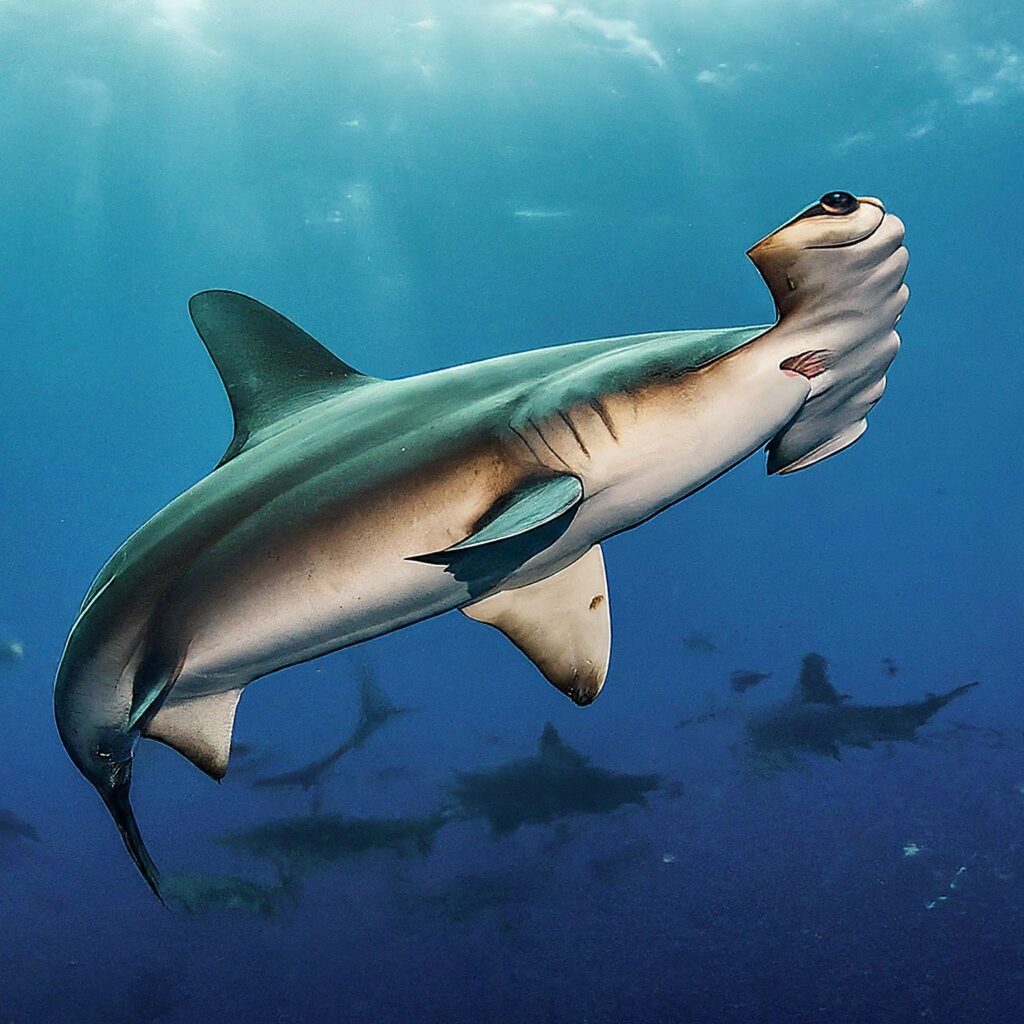
Conclusion
The world of hammerhead sharks is a diverse and intriguing one, with each species contributing to the rich tapestry of marine life. From the iconic Great Hammerhead to the lesser-known Scoophead, these sharks play vital roles in ocean ecosystems. As threats like overfishing and habitat degradation loom, understanding and conserving these remarkable creatures become paramount. By appreciating the uniqueness of each hammerhead species, we can work towards ensuring the continued survival and well-being of these awe-inspiring sharks.
Frequently Asked Questions About Hammerhead Sharks
1. Q: What is the distinctive feature of hammerhead sharks?
A: Hammerhead sharks are characterized by their uniquely shaped heads, known as cephalofoils, which are flattened and laterally extended, resembling a double-headed hammer.
2. Q: How many species of hammerhead sharks are there?
A: There are nine recognized species of hammerhead sharks. These include the Great Hammerhead, Scalloped Hammerhead, Smooth Hammerhead, Bonnethead, Scoophead, Smalleye Hammerhead, Carolina Hammerhead, Scalloped Bonnethead, and Winghead Shark.
3. Q: Where are hammerhead sharks commonly found?
A: Hammerhead sharks inhabit a wide range of oceanic regions. They are commonly found in tropical and warm temperate seas, coastal waters, and even offshore environments.
4. Q: What is the largest species of hammerhead shark?
A: The Great Hammerhead (Sphyrna mokarran) is the largest species of hammerhead shark, reaching lengths of up to 20 feet. It has a distinctive double-headed hammer shape.
5. Q: Are hammerhead sharks dangerous to humans?
A: Hammerhead sharks are generally not considered a significant threat to humans. While they may display curious behavior, they are not known to be aggressive towards humans. However, caution should always be exercised in the vicinity of any wild shark.
6. Q: What do hammerhead sharks eat?
A: Hammerhead sharks have a diverse diet that includes fish, rays, crustaceans, and cephalopods. The specific prey items may vary among different species.
7. Q: Why do hammerhead sharks have a unique head shape?
A: The hammer-shaped head of hammerhead sharks is believed to provide several advantages, including improved maneuverability and enhanced sensory perception. The positioning of their eyes allows for a broader field of vision.
8. Q: What threats do hammerhead sharks face?
A: Hammerhead sharks face threats such as overfishing, particularly for their fins, habitat degradation, and accidental bycatch. Some species, like the Scalloped Hammerhead, are listed as endangered.
9. Q: Do all hammerhead shark species have the same conservation status?
A: No, the conservation status varies among hammerhead shark species. While some, like the Great Hammerhead, are listed as endangered, others may have different conservation assessments. Conservation efforts are crucial to protect these species.
10. Q: Can hammerhead sharks be kept in captivity?
A: Hammerhead sharks are challenging to keep in captivity due to their specific habitat and behavioral needs. Only a few aquariums worldwide have been successful in housing and displaying certain species of hammerhead sharks.
11. Q: Are hammerhead sharks migratory?
A: Yes, many hammerhead shark species are known for their migratory behavior. They may travel long distances in search of food, suitable breeding grounds, or optimal environmental conditions.
12. Q: How can individuals contribute to the conservation of hammerhead sharks?
A: Individuals can contribute to hammerhead shark conservation by supporting sustainable fishing practices, advocating for marine protected areas, and raising awareness about the importance of these species in ocean ecosystems.






